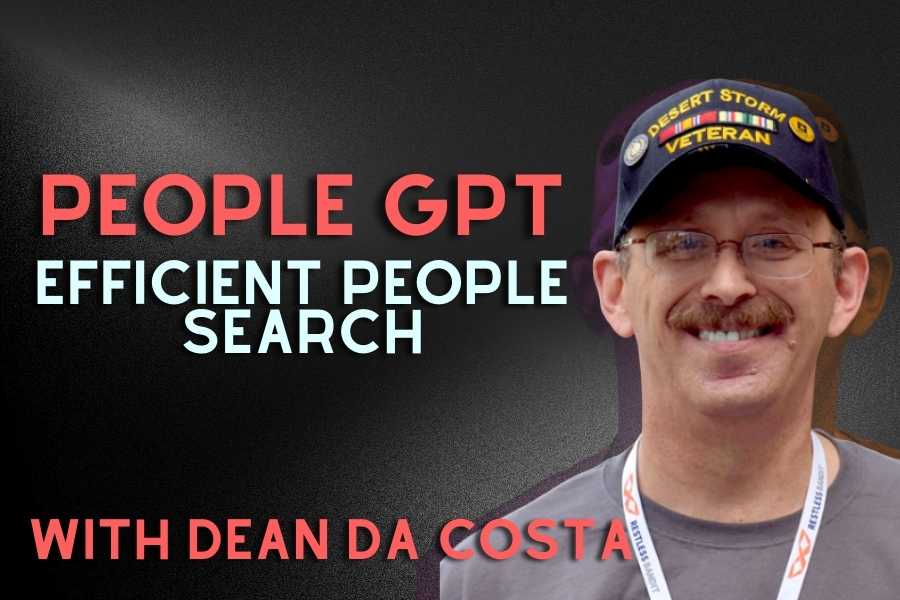Technology is fundamentally reshaping the talent acquisition landscape, bringing a new level of speed, efficiency, and sophistication to the recruitment process. Today’s recruiters have access to an unprecedented array of tools and technologies that enable them to source, screen, and hire candidates with greater precision and agility than ever before.
According to recent studies, a significant proportion of HR leaders, specifically 44%, consider enhancing business outcomes as their top strategic priority for HR technology transformation within the next three years.
Advanced analytics, artificial intelligence, and machine learning algorithms allow recruiters to quickly identify top candidates, predict their likelihood of success, and personalize the recruitment process to suit their needs.
Meanwhile, social media and other digital platforms have revolutionized the way employers engage with potential candidates, allowing them to build stronger employer brands and reach a wider audience than ever before.
The talent acquisition realm is in a constant state of flux, with new technologies and methodologies emerging at an ever-increasing pace. From recruitment automation to virtual reality and gamification, the possibilities for innovation in TA tech are endless. It thus becomes hugely crucial for recruiters to stay abreast of these talent acquisition technologies and not fall behind in their hiring decisions.
Embracing Change
With the breakneck pace of competition, keeping up with talent acquisition technology and embracing the TA tools is the little secret for organizations to stay on top of their recruitment game.
“Technology is driving a shift in the talent acquisition landscape towards a more candidate-centric approach,” says Robin Erickson, Vice President – Human Capital of The Conference Board. “The use of personalized communication, virtual reality, and gamification is enhancing the candidate experience and making it easier for employers to attract and retain top talent. But it is important to remember that technology is only one piece of the puzzle – it must be combined with effective employer branding and a strong candidate value proposition to succeed.”
It is paramount for organizations to realize that recruitment is not just a means to find new hires but it is also an important component of their overall brand and reputation. The cutting-edge TA technology is here to stay and companies who start adapting to it can enhance their reputation as an employer of choice, and attract top talent that shares their values and vision for the future.
But of course, implementing new technologies comes with its own challenges and welcoming talent acquisition tools can bring a set of discomforts. However, the rewards of embracing change and adopting new TA tech trends can be significant.
From increased recruitment efficiency and accuracy to a more positive candidate experience and enhanced employer brand, the benefits of staying ahead of the curve in talent acquisition are massive.
Companies must be willing to invest in the right tools and technologies and ensure that their recruiters are equipped with the skills and knowledge necessary to harness the full potential of these indispensable TA tools. Moreover, it is imperative for companies to ardently prioritize the ongoing evolution and refinement of their recruitment processes to ensure maximum efficacy, productivity, and competitive advantage.
The Tangible Benefits of Adopting Talent Acquisition Tools
When we talk about talent acquisition, there is no denying the importance of staying on top of the latest trends and technologies. Beyond the intangible benefits of talent acquisition technology such as a positive candidate experience and enhanced recruitment efficiency, unfolds an array of tangible benefits that organizations can expect to see when they make TA tech a top priority.
1. Increased Productivity & Efficiency
It is one of the most obvious benefits of embracing TA technology. By automating repetitive tasks and streamlining key aspects of the recruitment process, such as candidate sourcing and screening, recruiters can save time and focus their attention on more high-value activities, such as building relationships with candidates and conducting in-depth interviews.
2. Marked Improvement in the Quality of Hires
With the advanced AI-powered candidate matching algorithms and video interviews, recruiters can now effortlessly sift through a vast pool of candidates and identify individuals with the right skills, experience, and cultural alignment. The upshot of such precision in candidate selection is that companies can expect to attract and retain top-tier talent, thereby fortifying their position in an increasingly competitive marketplace.
3. Substantial Cost-Savings
According to a Gartner survey, the yearly expenditure on HR administration per employee has increased from 155$ in 2021 to 194$ in 2022. In times when HR professionals are keen on saving per employee cost, this increase is catastrophic and gives a cry for improvement.
Organizations that decide to implement talent acquisition tools in their recruitment strategy can reap a sizeable amount of savings in the long haul. By streamlining and optimizing the recruitment process, TA tools can considerably reduce the time and resources required to fill open positions. Furthermore, the ability to pinpoint the ideal candidate, with the right skill set and cultural fit, mitigates the risks of making bad hires that could result in exorbitant training costs, lost productivity, and potential legal liabilities.
4. Enhanced Candidate Engagement & Experience
The talent acquisition tools such as chatbots and video messaging softwares enable recruiters to create a tailored and captivating recruitment experience that resonates with candidates and engenders a positive relationship right from the start. This unparalleled level of personalization instills in candidates a sense of value and importance, making them more likely to stay engaged throughout the recruitment process and eager to accept an offer once extended.
5. Reduced Unconscious Bias
With the aid of AI-powered sourcing and screening tools, companies can decrease the influence of demographic factors such as age, gender, ethnicity, nationality, disability, or sexual orientation and instead shift the emphasis to identifying the most qualified candidates based on their skills and experience.
This approach not only eliminates the potential for bias and discrimination in the recruitment process but also promotes inclusivity and diversity in workplaces and augments the company’s reputation as an equitable and progressive employer.
The Ascendance of Technology in Talent Sourcing
Up till the last decade, recruitment was believed to be a reactive process where companies posted job ads and waited for candidates to apply. But with the advent of talent acquisition tools and technologies, the tables have turned and talent sourcing has become a crucial step of recruitment.
Talent sourcing is more of a proactive process where organizations can leverage automated sourcing tools to identify potential candidates even before there is a job opening. This significantly means that the recruiters have a robust talent pipeline in hand when a vacancy opens up.
This proactive approach to talent sourcing has remarkable implications for both companies and candidates alike. For companies, it means being able to identify and engage with top talent before their competitors and giving them an upper hand in the highly competitive job market. And for the candidates, it means being able to access a wider range of job opportunities and being approached by companies that may not have been on their radar before.
Amongst the myriad recruitment tools available, LinkedIn search stands out as the quintessential platform for discovering exceptional candidates. However, relying solely on LinkedIn’s native search functionality can be a limiting factor, leading recruiters to miss out on hidden gems that lie beyond the surface-level search results.
Enter talent sourcing tools – the game-changer for recruiters on the hunt for the best talent. These powerful tools harness the power of artificial intelligence (AI) and machine learning to augment LinkedIn’s search capabilities, unleashing a whole new realm of possibilities.
With the ascendance of fully automated talent-sourcing tools, companies can leverage a wide range of data sources, including social media profiles, job boards, and online communities, to build a comprehensive database of potential candidates. And moreover, the use of technology in talent sourcing is also helping to break down traditional barriers and create more inclusive recruitment practices.
With talent-sourcing tech tools plus LinkedIn search in hand, recruiters can now create more personalized and engaging recruitment experiences for candidates. And with the tools such as customized messaging and chatbots, recruiters can engage with candidates in a way that feels natural and authentic, building rapport and trust from the outset
The combination of LinkedIn search with AI-powered talent sourcing tools has significantly amplified the search for relevant candidates. With the use of these talent acquisition tools, recruiters can identify candidates based on their skills and experience, rather than relying on traditional markers such as education or employer referrals.
Overall, the emergence of technology in talent sourcing has sparked a paradigm shift in the recruitment industry. It’s no longer sufficient for recruiters to rely solely on LinkedIn’s search capabilities; instead, they must embrace a proactive approach to uncover the best talent. Talent sourcing tools represent a seismic leap forward, offering a turbo-boost to already existing LinkedIn search capabilities.
How to Leverage Talent Acquisition Tools for a Better Hiring Experience
Technology will keep evolving at its own pace, it is we humans who will need to make an extra effort to keep up with it. Adapting to talent acquisition tools can be a game-changer for companies looking to enhance their hiring experience, but it’s not always an easy transition.
To successfully integrate talent acquisition tools, companies need to cultivate a culture that values innovation, experimentation, and continuous improvement. This means encouraging employees to experiment with new tools, allowing them to make mistakes and learn from them. It also means creating a safe space for employees to voice their opinions and ideas on how to improve the recruitment process.
Furthermore, companies should recognize that technology is not a silver bullet solution to all recruitment challenges. The human element of recruitment, such as empathy, relationship-building, and intuition, cannot be replaced by technology. Instead, technology should be used to enhance and streamline the recruitment process while empowering recruiters to focus on building meaningful relationships with candidates.
The Final Word
By addressing the ever-dynamic technological landscape of talent acquisition, organizations as a whole can elevate their recruitment process and create a lasting impression on candidates. This will not only help in positioning them as torchbearers and innovators in their industries but also give them an edge over their competitors.
By proactively utilizing talent acquisition tools, organizations can circumvent hiring challenges and attain superior business outcomes. The use of advanced TA technology can drive improved efficiency, profitability, and employee retention rates, all of which are crucial factors in achieving long-term success. It is essential to understand that the adoption of TA tech is not merely a short-term expense, but rather a long-term investment that can significantly impact the bottom line of an organization.


















